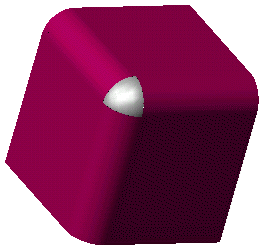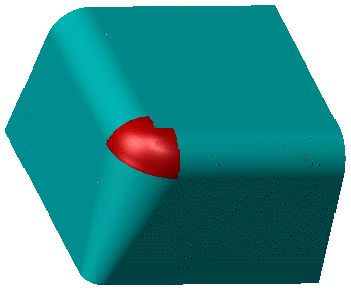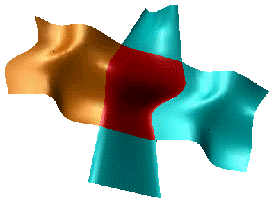A fillet is a type of blend surface, but it requires that the two surfaces actually intersect. They also have the restriction that they can only blend two surfaces. A blend surface is a more general blend of two, three or four surfaces. This surface constructor requires that you be familiar with creating curves on a surface and tangency, but it creates complex blends if these concepts are mastered by the user.
Two-surface blends
This figure shows a two-surface blend example. For this blend you must supply the curve on each surface to create this surface.

Three-surface blends
This figure shows a three-surface blend example. This blend is used to create what is known as a 'suitcase fillet'. This means that you want to create the intersection of three fillets like the corner of a suitcase. If you create the fillets with 3D modelling, the curves can usually be automatically detected.

Four-surface blends
This figure shows a four-surface blend example. It is another suitcase fillet. In this case one surface is not a fillet.

The curve for this surface must be specified. Four-surface blends can also be used to join four distinct surfaces as in this figure.
